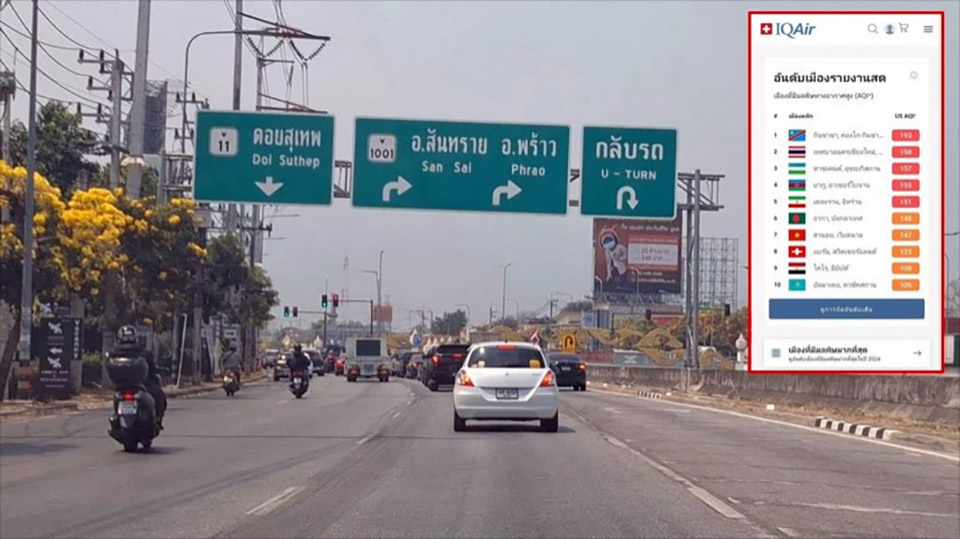
CHIANG MAI, Thailand – The thick haze has engulfed the entire city of Chiang Mai, making it nearly impossible to see the iconic Doi Suthep mountain. The situation is rapidly worsening due to the continuous rise in wildfire hotspots across the region. Chiang Mai now holds the second spot in the northern region of Thailand for the highest number of wildfire hotspots, with a significant impact on the city’s air quality.
According to the latest report from the Geo-Informatics and Space Technology Development Agency (GISTDA), there were 91 wildfire hotspots detected in Chiang Mai as of March 15, including areas like Omkoi (27 spots), Chiang Dao (21 spots), and Hod (15 spots). On the same day, GISTDA recorded a total of 680 wildfire hotspots across 17 northern provinces, with Chiang Mai accounting for the second-highest number after Tak.
The pollution levels in the city have exceeded safe standards, with the Department of Pollution Control’s air quality monitoring stations reporting PM 2.5 levels higher than the acceptable threshold, affecting public health. Stations in various districts, including Chang Phuek, Sri Phum, and Suthep, recorded PM 2.5 levels ranging from 37.7 to 62.1 micrograms per cubic meter, well above the standard of 37.5 micrograms per cubic meter.
Additionally, the Air Quality Index (AQI) for Chiang Mai reached an alarming 140-166, indicating health risks to all individuals. As of 2:00 PM, Iqair.com ranked Chiang Mai as the second-worst city in the world for air pollution, with an AQI of 158 and a PM 2.5 concentration of 66 micrograms per cubic meter. The city was surpassed only by Kinshasa in the Congo, which topped the list with an AQI of 193.
With the wildfire season continuing, residents and visitors are urged to take necessary precautions, such as wearing masks, staying indoors, and keeping windows closed to avoid exposure to the hazardous air quality.










